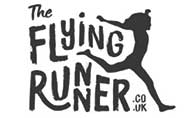Menu
This was shortlisted for the 2013 Sports Book of the Year and would in many years have been a worthy winner of the award. The author, a former USA college level middle-distance runner who has carved a role as sports science specialist for Sports Illustrated, the prestigious USA magazine, has travelled extensively to compile this fascinating book. Don’t be put off by the scientific side. There is some technical content and input from geneticists and other specialists. But what leaves the deepest impression on the reader are the extraordinary and diverse human stories. The nature of the subject leads to much of the material being about human outliers – the fastest sprinters, the quickest marathoners, the highest jumpers.
On the high jump front, there is a fascinating compare and contrast between Swedish Olympic Champion Stefan Holm and casual Caribbean rookie Dwight Thomas. Holm is described as probably the most intensely prepared high jumper in history – a mixture of nature, nurture and some fortuitous circumstances including the Swedish Athletics Federation siting a major indoor centre almost on his doorstep in rural Sweden as a young child. Plus he loved doing it and was massively self-driven to be the best. By contrast, Thomas, who dethroned Holm as World Champion, didn’t even do his first jump until adulthood, when he astounded his basketball teammates when clearing a full two metres (6 feet 7 inches) to win a bet. He then made startlingly quick progress before fairly quickly leaving the sport, which he didn’t like nearly as much as basketball. He also looks at the extraordinary concentration of elite sprinters who have come from the tiny geographical area of Trelwany in Jamaica, just the size of a city suburb yet a melting pot of numerous of the fastest men and women in history. It's a fascinating history that delves into the slavery that dominates the area and in particular the local rebellions which, arguably, led to a particular form of natural selection (literally, survival of the fittest) which exacerbated the genetic and biological traits found in the Caribbean people who had survived the initial slave tarde from West Africa
From an endurance perspective, Thomas’s stunning high jump trajectory has some common features with USA prodigy Jim Ryun. In his mid teens, going through a rebellious adolescence and with no sporting prowess yet shown, he dabbled – and initially it really was just dabbling – with the shorter end of middle distance running. Progress was startling as, when he came under the wing of a good coach, was the training load he could sustain. As an 18 year old he was regularly ploughing through 100 mile weeks, the volume packed with high intensity interval sessions, so that at age 19 he set a world mile record of 3 minutes.51 seconds that lasted a decade. Ryun, who went on to become a Republican Senator, was an extraordinary ‘responder’ to endurance training.
Further up the endurance spectrum there’s an astonishing story of a Finnish cross country skier whose family have a rare genetic mutation that gives them outlieing endurance prowess. This, coupled with his day job in ‘border security’ in the Arctic North of Finland, and requiring hours of cross country skiing each day to manage his ‘patch’, lead to him becoming virtually unbeatable in numerous winter Olympics, with his rare genetics more than making up for the relative simplicity of his training regime. In our own sport, it was great to be reminded of the story of New Mexican whippet Tony Sandoval, possibly the rawest and most lightly trained 2.10 marathoner in history (outside Kenya and Ethiopia, maybe we should add). He benefitted from an extremely active outdoor life, high altitude, a bodyweight of 115 lbs/52 kgs for his 5 ft 8/ 1m 72 frame, and sadly his marathon peak came in 1980, the year when the USA boycotted the Olympics in Moscow. His own motivation was also a constraint, because as, first a medical student and then as a doctor in his home region, he was more stimulated by the calling of his profession than by the minutiae of long term marathon training. His story is just one example of why, ultimately, the author isn't a huge supporter of using genetic data as the sole selection method for elite sports people, as the minds and emotions of those with the best genes very often don't make the 'right' choices to max out their sporting potential.

